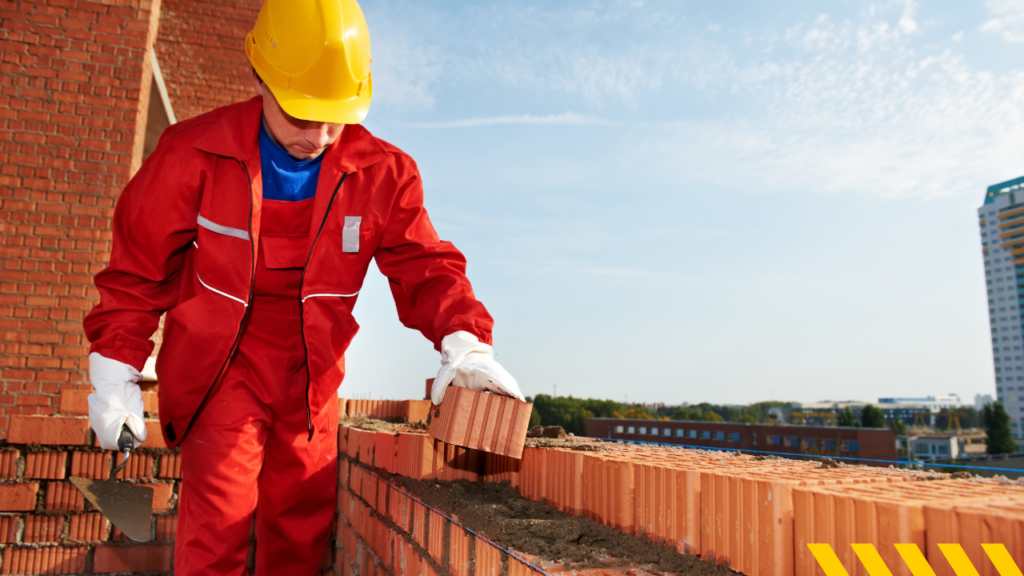When it comes to building structures, there are various construction methods used nowadays. From traditional wood frame buildings to modern steel and concrete structures, different materials and techniques have been utilised to create solid and durable homes, offices, and other types of buildings.
However, one technique that has stood the test of time is masonry construction. Dating back centuries ago, this method has withstood the challenges of natural elements and continues to be a popular choice in constructing both residential and commercial buildings. But what exactly is masonry construction?
I will delve deeper into its history, benefits, and materials used, as well as provide an overview of the process itself. Whether you are considering this method for your building project or simply curious about its intricate details, let’s get started!
Overview of Masonry Construction
In the realm of Construction takeoff, masonry plays a crucial role in shaping architectural landscapes. Masonry construction involves the art of assembling structures using individual units, such as bricks, stones, concrete blocks, or tiles, bound together by mortar. This meticulous craft demands precision and skill to create durable and aesthetically pleasing buildings that stand the test of time.
Masonry construction entails the detailed process of estimating materials, labour costs, and project timelines specific to masonry projects. It involves assessing the quantity of materials required, determining the scope of work, and creating a comprehensive plan to ensure the successful execution of the project. Accurate measurements, cost calculations, and project scheduling are essential components of an effective masonry construction takeoff, paving the way for a seamless construction process from start to finish.
Types of Masonry Structures
Masonry structures come in various forms, each with its unique characteristics and applications. Here are some common types:
Load-Bearing Masonry Structures:
Load-bearing masonry structures support vertical loads from floors, roofs, and other structural elements without relying on additional frameworks or supports. Common load-bearing masonry structures include solid brick walls, cavity walls, and reinforced masonry walls.
Architectural Masonry Elements:
Architectural masonry structures focus on creating visually appealing features using brick, stone, or concrete blocks. These elements include decorative facades, ornamental columns, arches, lintels, cornices, and intricate patterns that enhance the aesthetics of buildings.
Retaining Walls:
Retaining walls are masonry structures designed to maintain soil, prevent erosion, and provide structural support for changes in elevation. These walls can be built using various materials such as concrete blocks, segmental retaining walls, or natural stone masonry.
Fireplaces and Chimneys:
Masonry fireplaces and chimneys are constructed using heat-resistant materials like firebricks and refractory mortar. These structures provide warmth, ventilation, and aesthetic charm to residential and commercial spaces, often incorporating intricate brick or stone designs.
Foundations and Footings:
Masonry foundations and footings form the base of a building, transferring loads from the structure to the ground. Common foundation types include concrete block foundations, stone foundations, and reinforced masonry footings that provide stability and support for the entire building.
Piers and Columns:
Masonry piers and columns are vertical structural elements that support beams, arches, or ceilings in buildings. Constructed using brick, stone, or concrete blocks, these elements provide vertical load-bearing capacity and architectural character to structures.
Boundary Walls and Fences:
Boundary walls and fences are masonry structures built to define property lines, provide privacy, and enhance security. These walls can be constructed using brickwork, stone masonry, or concrete blocks, offering durability and aesthetic appeal to residential and commercial properties.
By understanding the different types of masonry structures and their applications, architects, engineers, and construction professionals can create functional, durable, and visually striking buildings that leverage the versatility and timeless appeal of masonry construction methods.
Benefits of Masonry Construction
Masonry construction offers a wide array of benefits that make it a popular choice for building projects. Here are some key advantages:
- Masonry structures are known for their durability and resistance to fire, rot, pests, and extreme weather conditions. They have a long lifespan, requiring minimal maintenance over time compared to other construction methods.
- Masonry construction provides excellent structural integrity, with load-bearing walls capable of supporting heavy vertical loads and withstanding lateral forces. This results in stable and robust buildings that ensure occupant safety.
- Masonry structures provide adequate sound insulation, reducing noise transmission from external sources and creating quieter indoor environments. This benefit is particularly advantageous in residential, educational, and commercial buildings.
- Masonry materials offer inherent fire resistance, slowing down the spread of fires and providing valuable time for evacuation and firefighting efforts. Brick, block, and stone masonry contribute to increased fire safety in buildings.
- Masonry construction allows for diverse design possibilities, including intricate patterns, textures, colours, and architectural details. The timeless aesthetics of brickwork, stonework, and decorative masonry enhance the visual appeal of structures.
- Masonry materials are natural, recyclable, and locally sourced, reducing the environmental impact of construction. By using sustainable masonry practices, builders can create eco-friendly buildings that align with green building standards.
- Masonry structures demonstrate resilience to earthquakes, hurricanes, and other natural disasters due to their solid construction and ability to withstand external forces. This makes masonry an ideal choice for buildings in high-risk regions.
- Buildings constructed using masonry methods often have higher resale values and attract discerning buyers due to their quality, aesthetics, and reputation for longevity. Masonry construction can contribute to increased property appreciation.
- Masonry structures typically require minimal maintenance over their lifespan, reducing the need for frequent repairs or replacements. This can result in cost savings and prolonged building service life.
By leveraging the benefits of masonry construction, builders, architects, and property owners can create resilient, energy-efficient, aesthetically pleasing, and sustainable structures that stand the test of time and offer numerous advantages across residential, commercial, and institutional projects.
Conclusion
Masonry has been a cornerstone of construction for centuries, and its enduring legacy continues to shape our modern built environment. From the ancient pyramids of Egypt to the towering skyscrapers of today, masonry has proven itself to be a reliable and versatile building material. Additionally, masonry allows for intricate designs and can be adapted to fit any architectural style or vision. Whether used in residential or commercial construction, it adds character and charm to any structure. So the next time you see a beautiful brick building or admire the impressive stone walls of a medieval castle, remember the rich history and practicality behind masonry construction. It truly is an art form that will continue to stand the test of time.
Stay tuned for more news and updates on Infinite Insight Hub!



